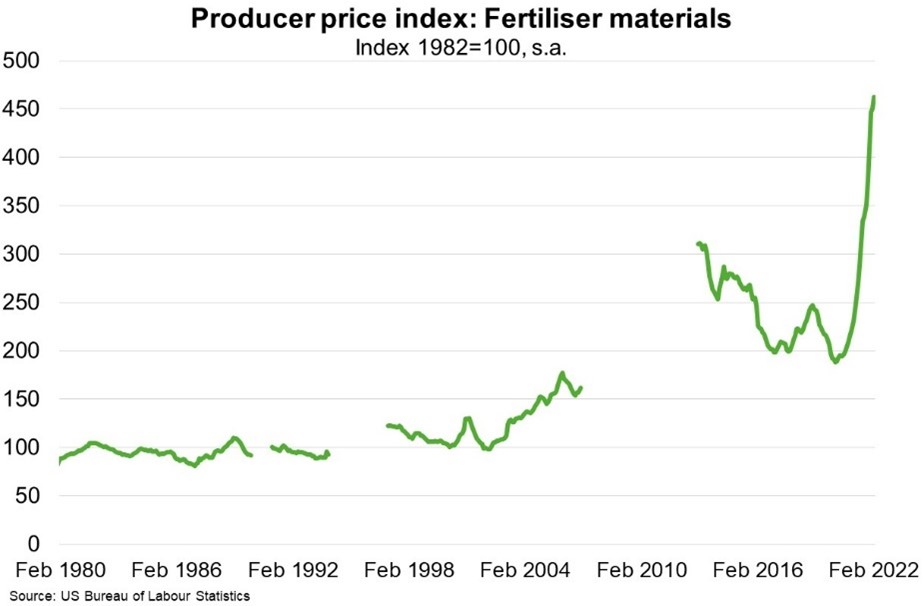World—Prolonged high fertiliser prices could worsen food insecurity
Strong global demand, high input costs (including high prices for oil and gas), and multiple supply interruptions have pushed fertiliser prices, particularly inorganic (hydrocarbon-dependent) fertilisers, to record levels (Chart). Demand has been driven by a) record global food prices, which have raised the incentive for farmers to maximise yields, and b) government policies that have sought to develop domestic agriculture, thereby reducing reliance on global supply chains. Supply-side strains arising from COVID-19-related shutdowns, export restrictions, inclement weather, and surging shipping and energy input costs have been compounded Russia’s decision to invade Ukraine, which has disrupted global supplies of wheat, corn, barley, and seed oil. Russia and Belarus also supply more than 20% of the world’s fertilisers.
Longer term, fertiliser production and trade patterns will adapt as some countries seek increased self-sufficiency in food and as COVID-19 induced supply chain disruptions are resolved. Growing demand for fertiliser may create opportunities for Australia to increase production of traditional and green fertilisers. However, it will likely take years for countries to reorient their supply chains. In the meantime, high food prices should incentivise higher planting levels, but any gains may be mitigated by high input costs.
Rising fertiliser costs compound headwinds to global trade and GDP growth arising from the Russian invasion. This month, the World Trade Organization downgraded its forecast for merchandise trade volume growth to 3% in 2022, from a previous forecast of 4.7%. Prolonged high prices for inorganic fertilisers, due to prolonged spikes in global energy prices, are also likely to exacerbate food insecurity and worsen poverty. Lower income countries are likely to suffer more than advanced economies, given food accounts for a larger portion of household spending and fertiliser is a large share of farmers’ input costs. For example, the Peruvian government has declared the agricultural sector in emergency, with rising fertiliser prices fuelling social unrest and exacerbating political risks.


